I love all the variety of flowers we get to choose from! But what about those gorgeous, uncommon perennials that aren’t as popular in the gardening world? Here are 15 you need right now and how to grow them.
This post contains affiliate links. For more information, see our disclosures here.
15 Uncommon Perennials You Need in Your Garden Right Now
Most of us are familiar with the beautiful zinnia, cosmos, peony, and the list could go on. And for good reason, these flowers are amazing!
But there are so many other equally incredible flowers that are often overlooked or not even heard of.
Today we will look at 15 uncommon perennials you truly do need in your garden, and we’ll talk about WHY. Not only are they beautiful, but they have a ton of benefits! Yay, more flowers!
1. Globe Thistle
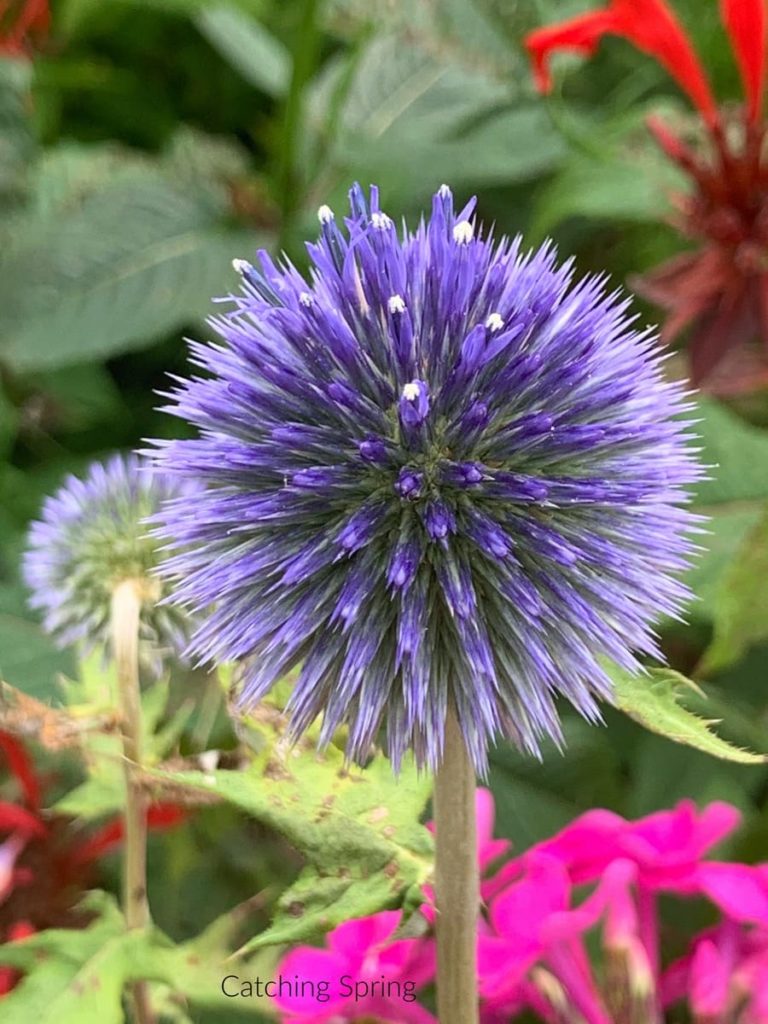
Globe Thistle caught my attention a couple of years ago in an article I read about attracting butterflies.
This flower was supposed to be a pollinator attracter, so of course, I bought some seeds and started them indoors.
Transferring this plant outside, I observed through the season just how much it attracted pollinators.
To my delight, I noticed butterflies, bees, and even hummingbirds grabbing a meal from it. Yay!
I also noticed that it stood out among the other flowers for being different.
It literally had these “globes” of flowers of deep lilac color standing out in my garden. The leaves were also different and attractive.
I sometimes have to watch for cucumber beetles on it, though, but I found that when I moved it to a better location (it was too shady and crowded where it was), it did better.
CARE: Hardy in zones 3-9. Globe thistle prefers full sun and moist, well-drained soil.
BUY: Plants or seeds at Bluestone Perennials.
2. Mountain Mint
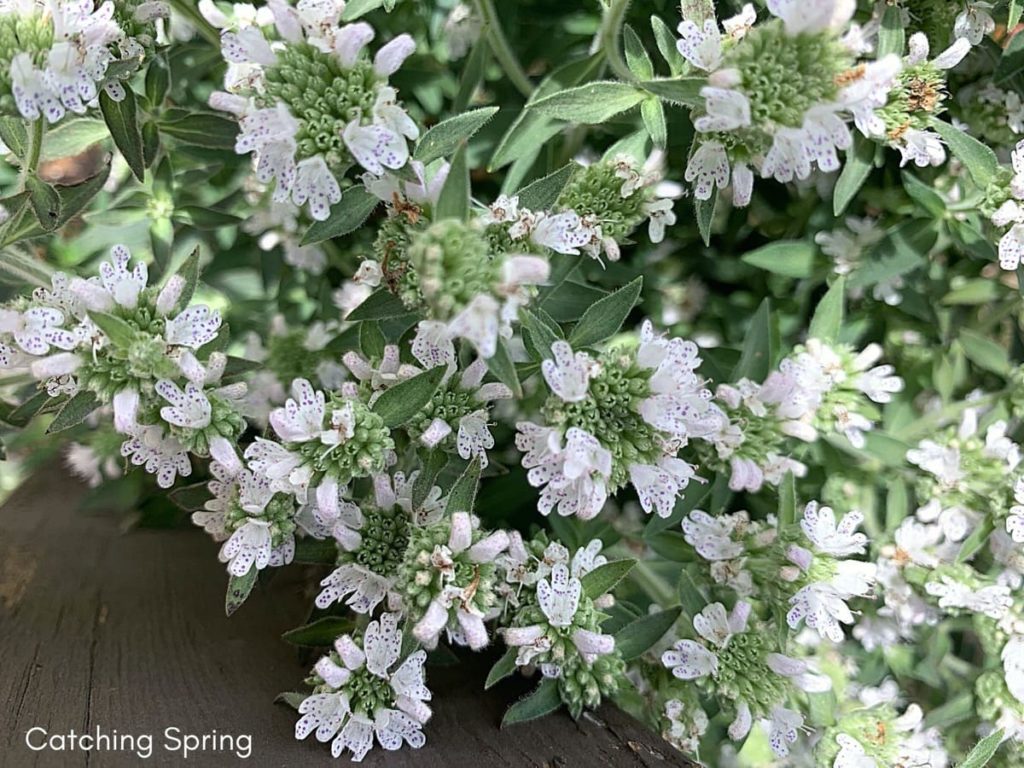
Out of these uncommon perennials, I would say this one attracts the most bees and other beneficial insects.
I am so in awe walking by this bushy plant filled with white flowers in summer and end of fall; it’s literally filled with bees!
I heard about Mountain Mint about the same time I heard about Globe Thistle, and wow, I am so happy I have 4 different mountain mint plants! They are incredible for pollinators!

Unlike some mint plants, these are totally NOT invasive at all. Mine have gotten fuller but have not spread.
If you care about providing for bees and other pollinators, you can’t go wrong with Mountain Mint!
CARE: Hardy in zones 3-8. It prefers full sun (but will tolerate some shade) and likes regular watering. It will tolerate hot, dry summers.
BUY: Seeds or Plants at Prairie Moon Nursery.
3. Rattlesnake Master
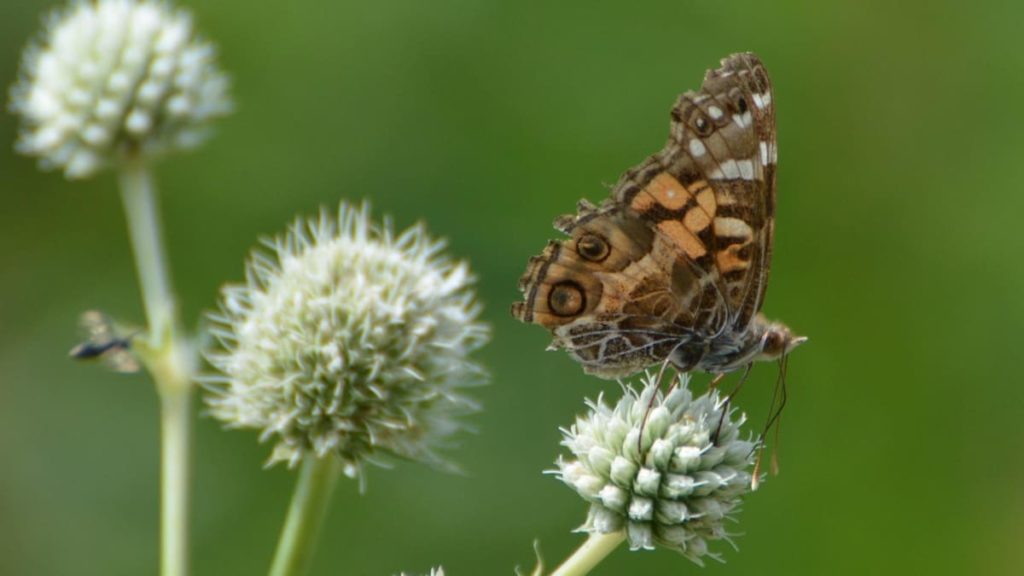
Have you heard of Rattlesnake Master? Whenever I mention it, I get a quizzical look. I feel this is the most unheard of in this list of uncommon perennials.
It’s a great plant to have, though!
It is a favorite in the garden for pollinators like the Monarch, Skippers, and other butterflies. It is also a major attractant for different varieties of bees and other beneficial insects.
It also has a unique look to it with the ball-like, white flowers. Although it resembles a thistle plant, it is unrelated.
These plants can get pretty tall, so they may need stalking or a place to lean.
Want more butterflies? Plant the Rattlesnake Master!
CARE: Hardy in zones 3-8. These uncommon perennials do best in full sun and most garden soils, although they prefer it sandier.
BUY: Seeds, Bare Root, or Potted Plants at Prairie Moon Nursery.
4. Joe Pye Weed
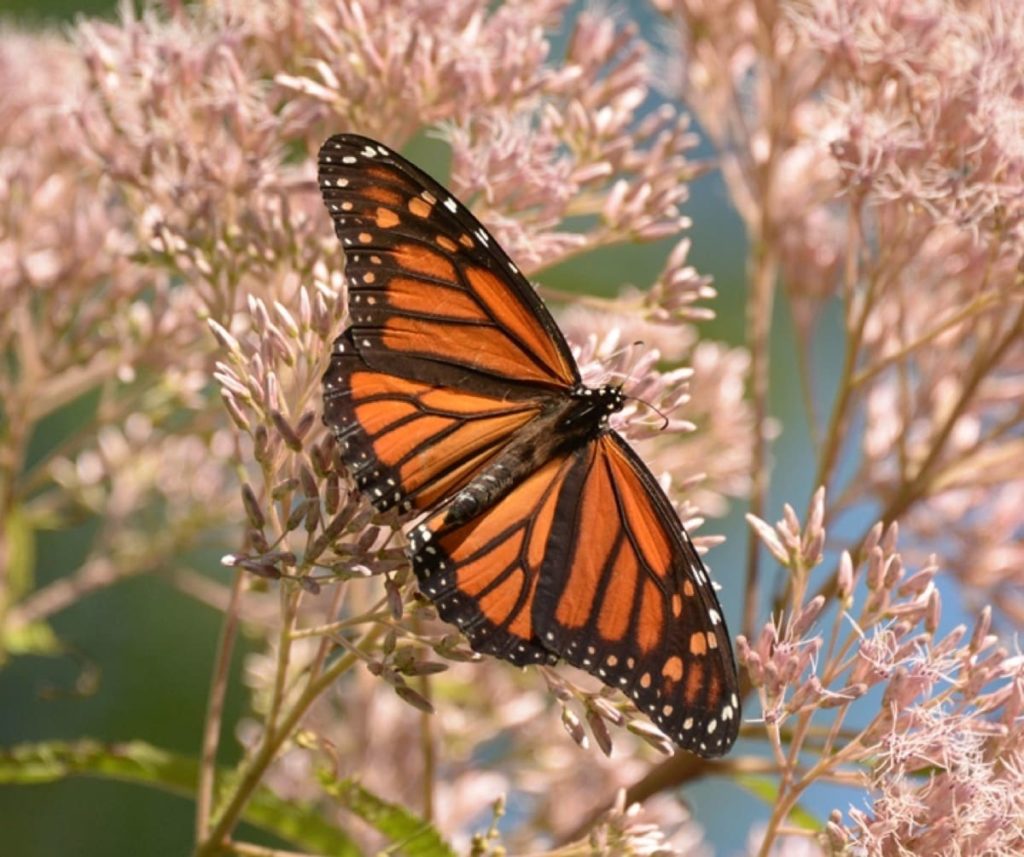
Contrary to the name, this beautiful native flower is not a weed! What Joe Pye Weed is is a butterfly and pollinator attractant!
This wildflower stands tall in the garden or field with its soft, light pink flowers. It beckons bees, butterflies, and other beneficial insects everywhere to dine on the flowers.
Joe Pye Weed is definitely a butterfly and bee magnet and a late-season bloomer. Perfect for pollinators after other flowers stop producing.
CARE: Hardy in zones 4-9. This plant prefers full sun to partial shade and likes to be kept somewhat moist. Can be grown in average to rich soil.
BUY: Plants and Seeds at Joyful Butterfly.
5. Baptisia
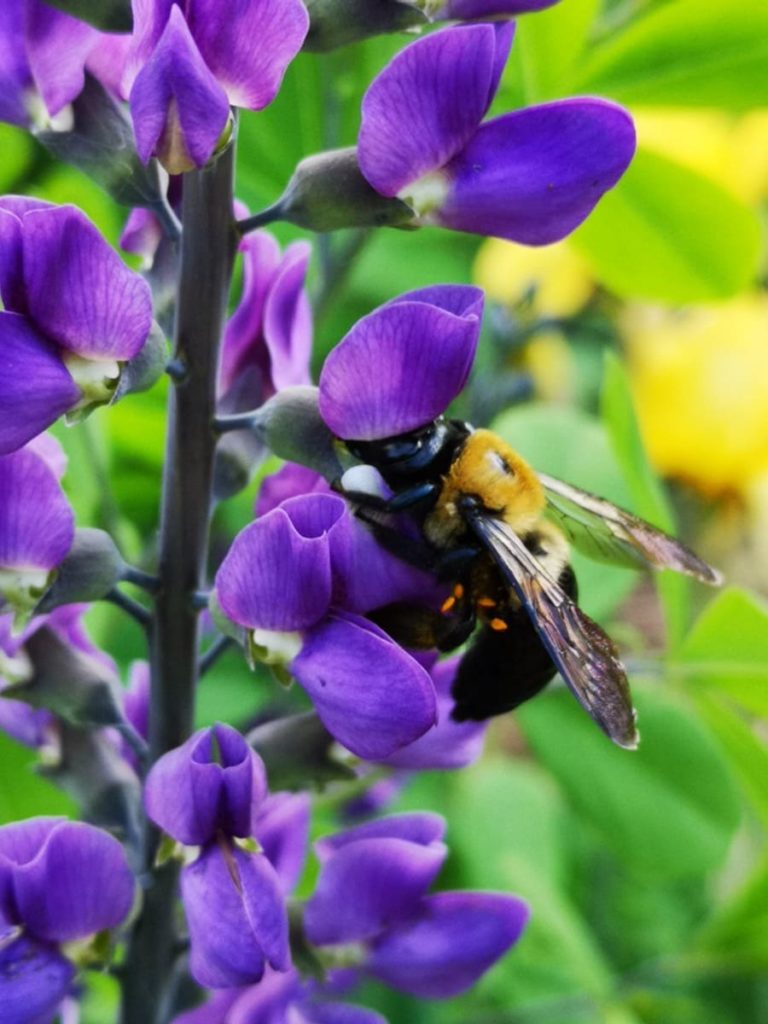
Out of this list of uncommon perennials, this is probably the most heard of. Baptisia is also known as False Indigo or Wild Indigo.
This beautiful, hardy perennial looks fantastic from spring to winter with its deep blue/purple flowers. It’s a long bloomer!
They can reach up to 4′ tall and are another excellent pollinator attractant!
It attracts butterflies, moths, bees, and other beneficial insects. It is also an important host plant for many different caterpillars, including the well-known Clouded Sulphur.
CARE: Hardy in zones 3-10; they do best in full sun but will tolerate some shade. They are drought-tolerant but prefer regular watering. Slightly acidic soils will benefit them, although they are low-maintenance.
BUY: Plants and Seeds at Joyful Butterfly.
6. Culver’s Root
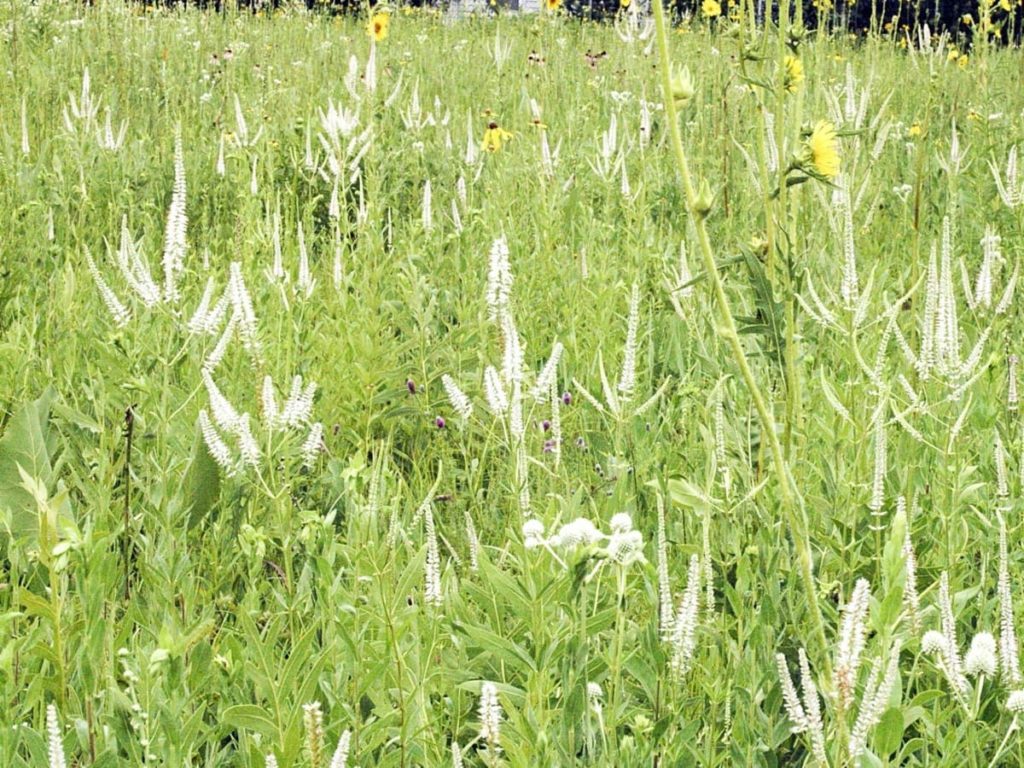
This is one of those uncommon perennials that I feel deserves more recognition! To be honest, I just recently became aware of Culver’s Root!
If you have one of these, you will see a constant flow of honey bees to the small white flowers!
Many other native pollinators also are attracted to this native plant, which blooms from summer to fall.
The blooms fill the entire plant and sort of resemble a candelabrum.
CARE: Native grower in zones 3-8, they love full sun but will tolerate a little shade. Culver’s Root prefers moist, well-drained soil.
BUY: Seeds, Bare Roots, and Plants at Prairie Moon Nursery.
7. Queen of the Prairie
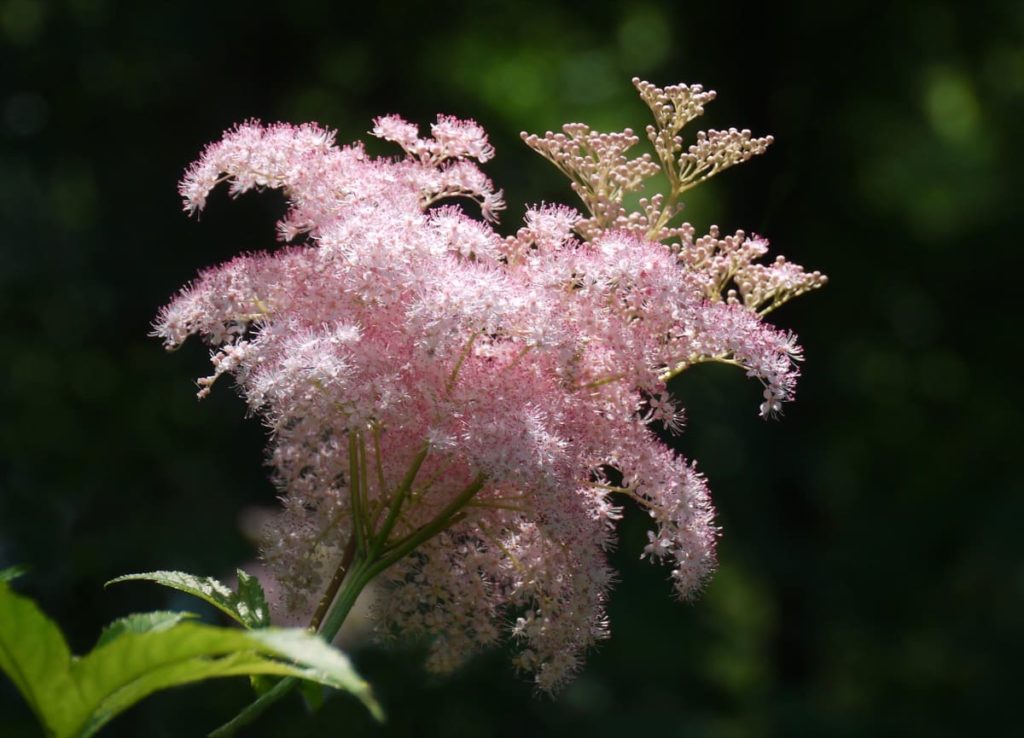
Queen of the Prairie is a summertime bloomer that has fluffy-looking, pink, wispy flowers that make you want to touch them! They look like pink cotton balls!
The large leaves are a point of interest as well, with their zigzagged stems. These uncommon perennials can get quite tall but don’t usually need to be staked.
Butterflies, hummingbirds, and bees are drawn to the beautiful flowers, yet other critters don’t seem to care for them.
They are quite stunning when massed together, but beware if you are planting them in a small garden as they may spread quickly through underground rhizomes.
They are not invasive, though, and just need to be transplanted or given to friends like Bee Balm or Hostas do.
They are actually considered to be somewhat of a rare native plant.
CARE: Hardy in zones 3-9, Queen of the Prairie does best when grown in full sun. They also prefer moist to wet soils.
BUY: Seeds or Bare Root Plants at Prairie Moon Nursery.
8. Blue Vervain
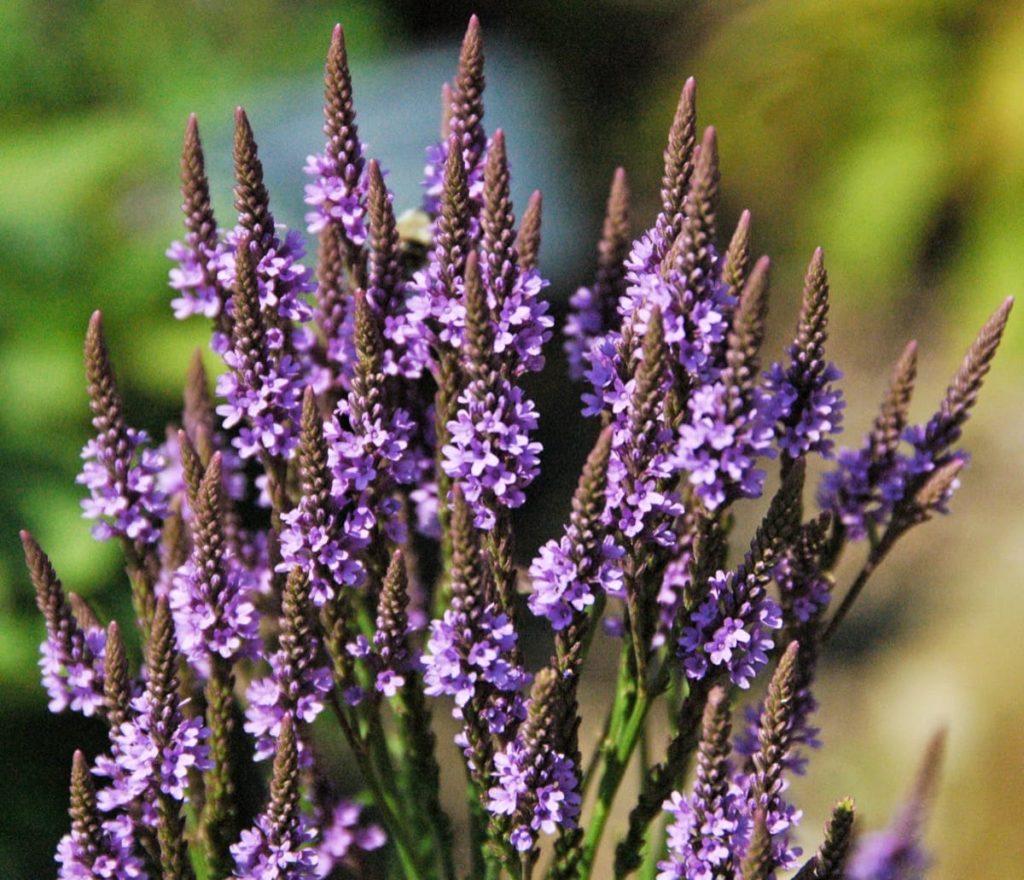
Blue Vervain wildflowers (aka Wild Hyssop or Verbena) grow wild in nearly every part of the United States.
Grow this in your yard, and you’ll see a massive amount of butterflies, bees, and other pollinators frequent the deep blue-violet flowers.
After the flowers have gone to seed, you’ll see birds dine on them until they are gobbled up. (Another reason NOT to cut flowers down after summer!)
These tall uncommon perennials will look great in any garden as this graceful plant shows off its candelabra-like flowers.
CARE: Hardy in zones 8 and colder. They grow best in full sunlight and well-drained, moist, and moderately rich soil.
BUY: Seeds, Bare Root, or Plants at Prairie Moon Nursery.
9. Catmint
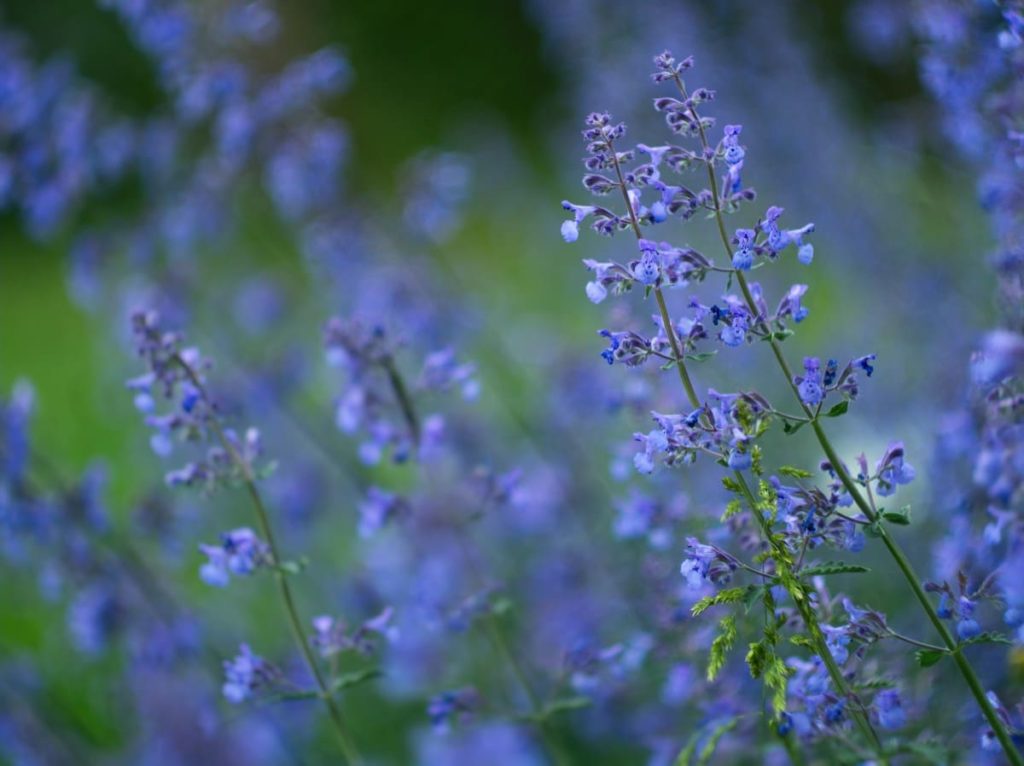
Catmint, not to be confused with catnip, offers many benefits in your garden.
Not only do bees, butterflies, and hummingbirds love the delicate flowers, it is also a host plant for different species of butterflies and moths.
It also has the added benefit of deterring garden pests like aphids and squash bugs.
The flowers smell lovely, but deer and rabbits don’t seem to think so. A beautiful plant that is very easy to care for!
CARE: Hardy in zones 4-8, catmint can be grown in sun or partial shade. They like average, well-drained soil and are heat and drought-tolerant.
BUY: Plants at Bluestone Perennials.
10. Cup plant
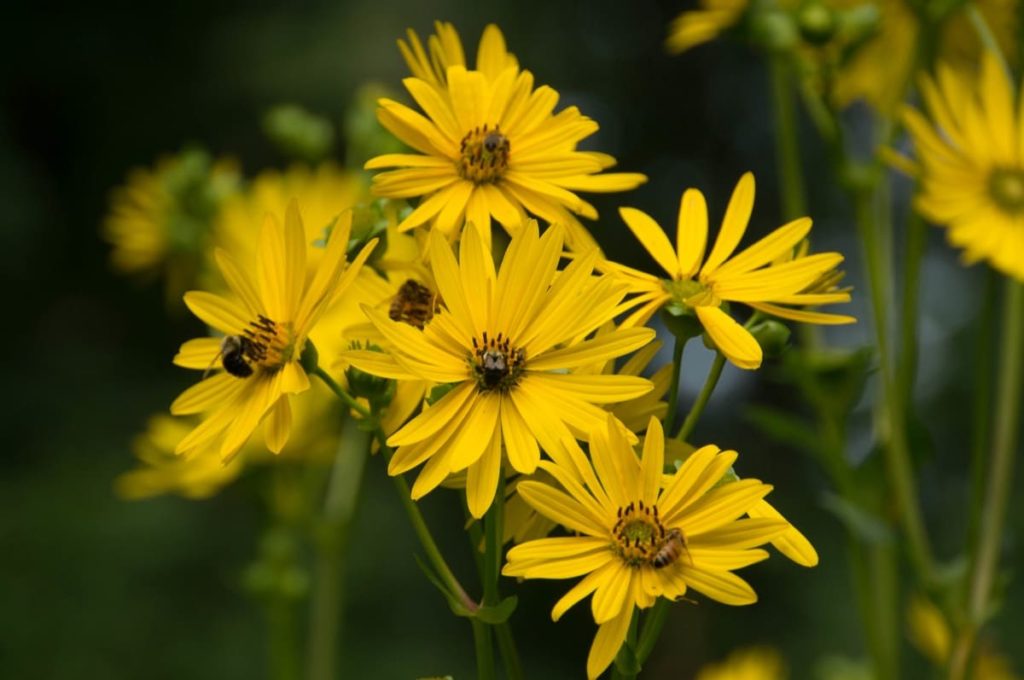
I love the Cup Plant! These uncommon perennials have an added bonus of holding cups of water for birds, insects, and small animals to drink from.
Their leaves form little cups near the stems, allowing for rainwater to be held there for wildlife.
The flowers are beautiful and resemble sunflowers. Pollinators of all kinds are highly attracted to them as the wildflower stands tall in your garden all summer long.

You will love these! They are like bursts of sunshine in your yard, and beyond planting, their care is minimal!
CARE: Hardy in zones 4-8, they do best in full sun but will tolerate some shade. They prefer average to moist garden soil.
BUY: Seeds, Bare Root, or Plants at Prairie Moon Nursery.
11. Turtlehead
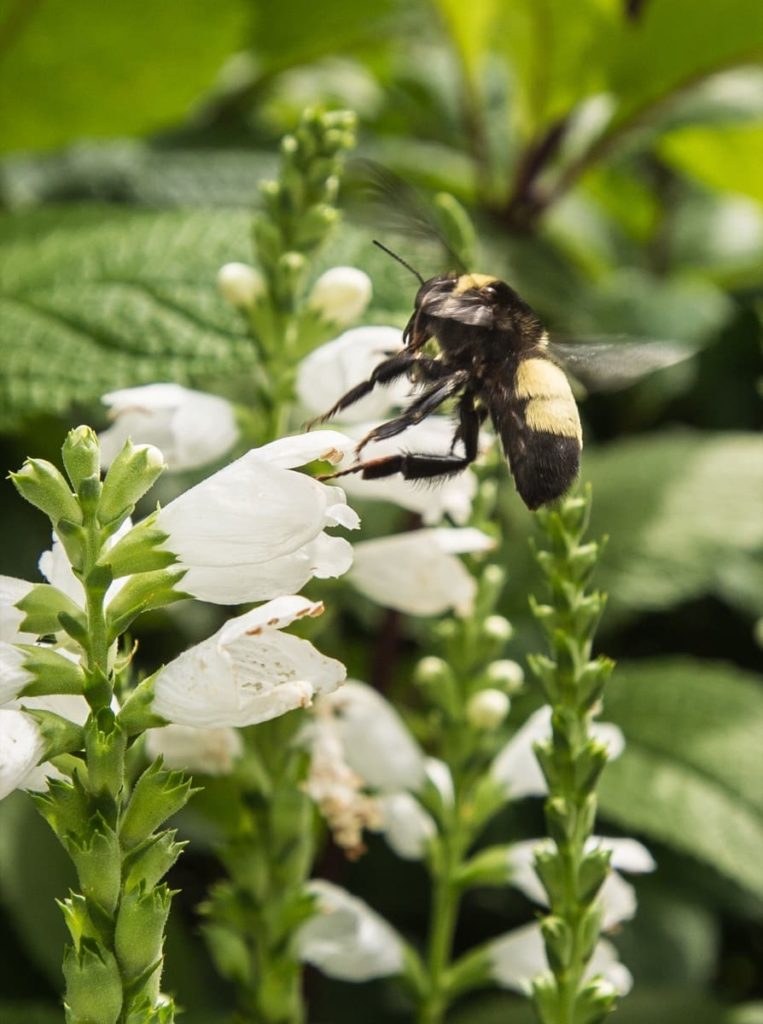
Turtlehead is one of those uncommon perennials that will bloom for a long time in late summer after many other flowers are done.
Standing 2-3′ tall, it’s unique, snapdragon-like flowers come in different colors. But bees, butterflies, hummingbirds, and other pollinators love them just the same.
It is also a host plant for the Baltimore Checkerspot butterfly!
This native perennial is found in most of the eastern US and a perfect choice for a rain garden or bog/swampy area.
CARE: Turtleheads are hardy in zones 4-8. They do well in full sun or partial shade and prefer moist to wet soil.
BUY: Plants at Joyful Butterfly.
12. Boneset
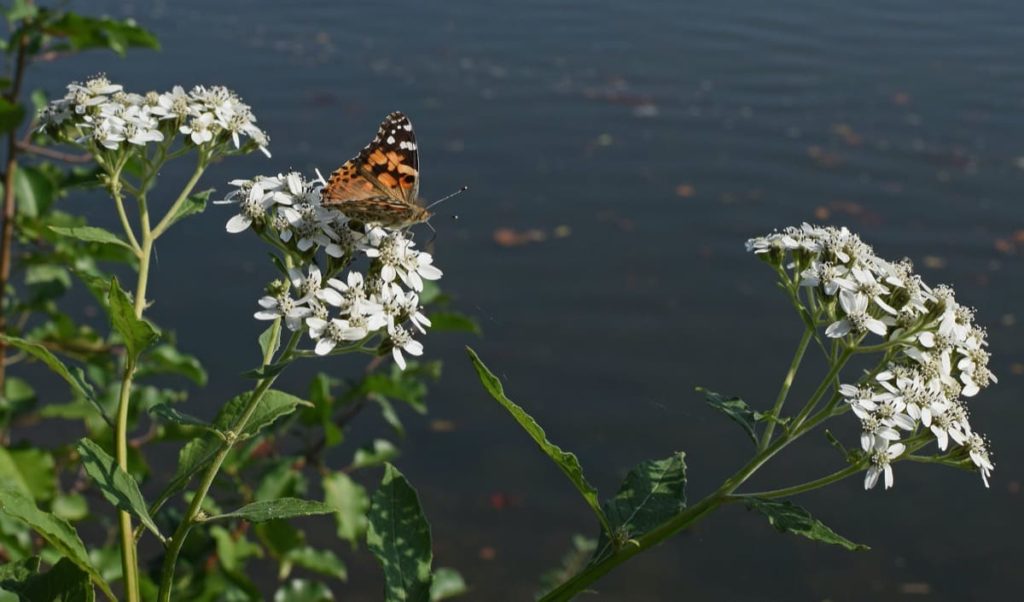
Boneset is a pollinator magnet!!!
Not only is it a pollinator hot spot, but it’s a late-season bloomer, so it’s extra appreciated! The number of butterflies, bees, and other beneficial insects on it is astounding! I’ve seen hummingbirds sip from it as well.
With its pretty clusters of white flowers, native Boneset can reach a height of 4′. Perfect for pollinators! It’s an attractive plant and a bonus to any yard.
It blooms from late summer to fall and can last a couple of months. It also has a pretty floral scent – no wonder pollinators flock to it!
You’ll definitely see the Monarch butterfly on it as they make their way to migrate!
CARE: Hardy to zone 3, Boneset prefers partial shade to full sun. It prefers moist, rich soil, although it’s a bit drought-tolerant in the summer.
BUY: Seeds at Prairie Moon Nursery.
13. Sneezeweed
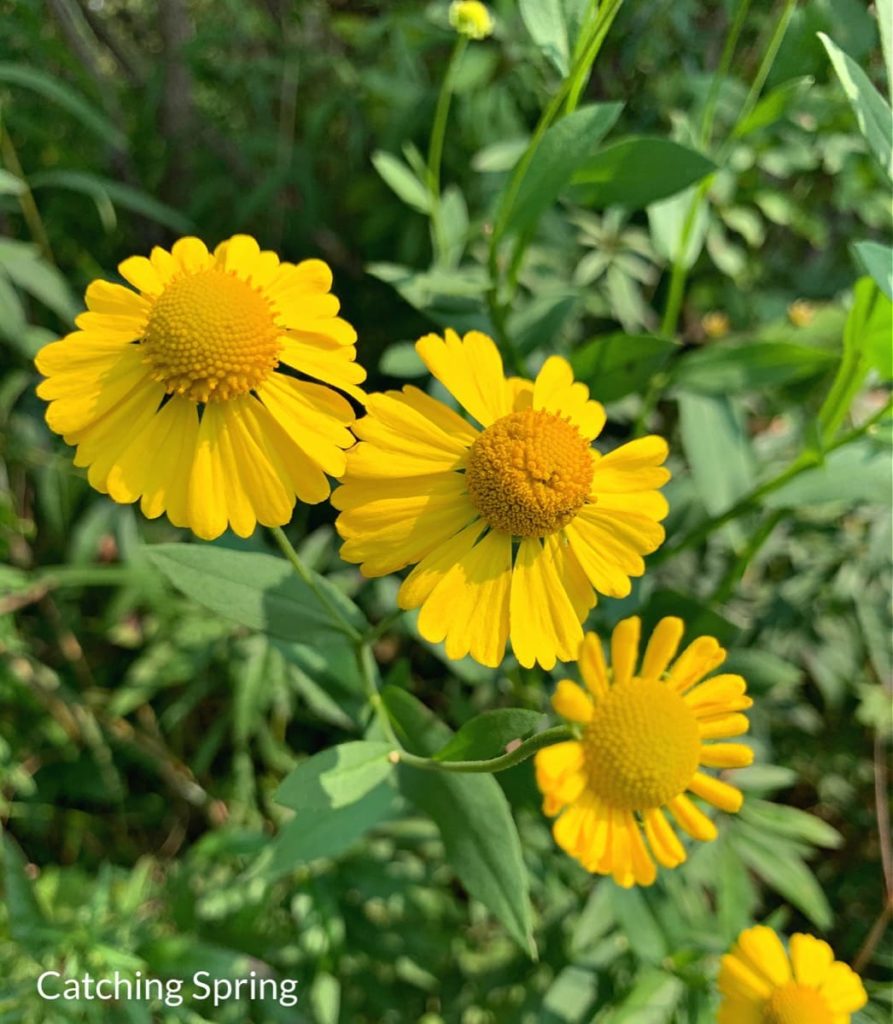
Sneezeweed might be the funniest name in these uncommon perennials, but don’t let the name scare you; it most likely won’t make you sneeze.
Sneezeweed is a gorgeous yellow flower that pollinators, especially bees, love.
You may also know this plant by its genus name, Helenium. It’s also known as false sunflower.
I love the shape of the petals on these uncommon perennials, as they kind of square off at the end, softened by lobes that make it look fancy. I just recently “found” Sneezeweed, and I love them!
CARE: Hardy in zones 3-8, Sneezeweed does best in full sun. They also like average to rich soils that are kept moist or occasionally wet.
BUY: Seeds and Plants at Prairie Moon Nursery.
14. Pearly Everlasting
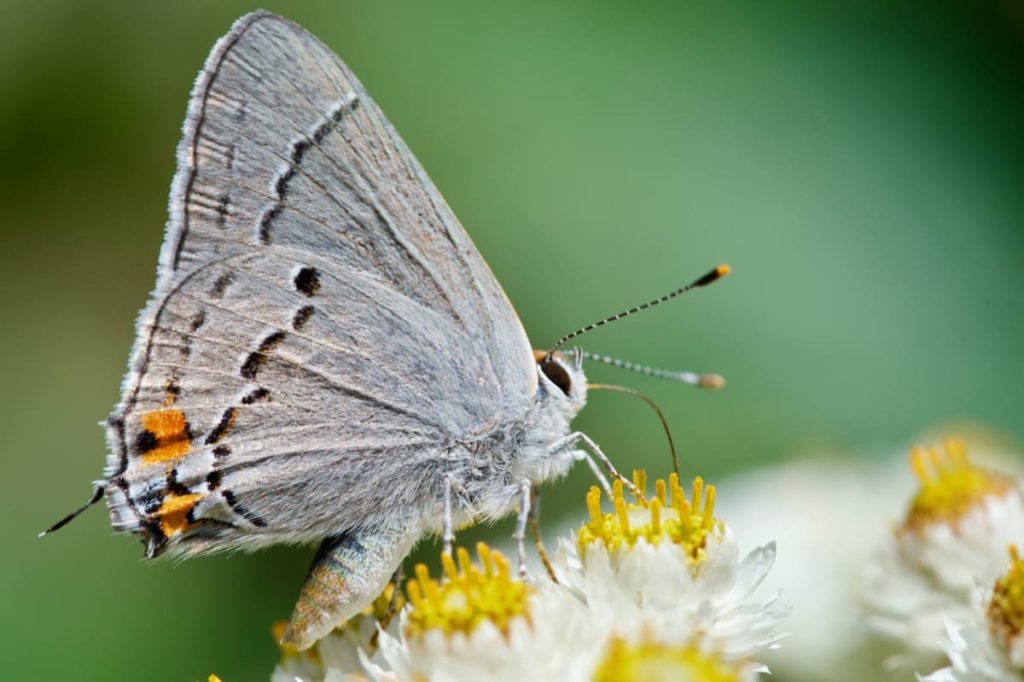
Another not-so-common perennial that you need – Pearly Everlasting! These pretty plants with “balls” of pretty white flowers will bring in the butterflies!
Other pollinators love the flowers as well, and it’s a host plant for the gorgeous Painted Lady butterfly!
They are a low maintenance flower that will bloom all summer long. This plant will even grow in poor or rocky conditions! It gets 1-3′ tall.
CARE: Hardy in zones 3-7, this native plant likes full sun. It’s drought-tolerant and prefers drier soil.
BUY: Seeds at Joyful Butterfly.
15. Obedient Plant
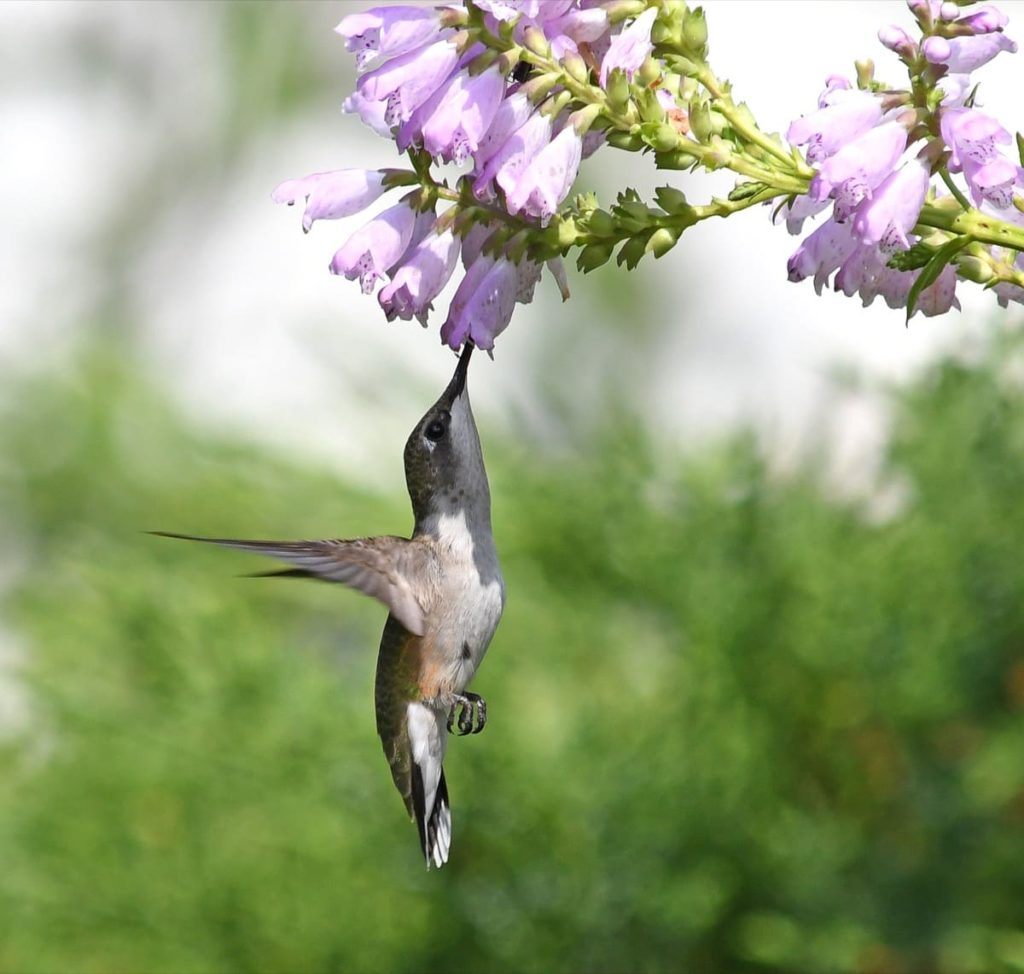
The pretty Obedient Plant will amaze you with the number of bees, butterflies, and hummingbirds that flock to it! It’s a feast for them!
These pretty, uncommon perennials grow 18-36″ tall and have tall spikes of dainty pink, white, or purple flowers that grow on the sides like small trumpets.
They are also relatively deer-resistant.
Fun Fact: They are called Obedient Plant because if you manipulate a flower on the stem in a particular direction, it’ll stay there. No need to mess with nature’s perfection, though!
CARE: Hardy in zones 3-10, they are happiest in full sun but will tolerate some shade. They like moist, rich soil the best.
BUY: Seeds, Bare Root, or Plants at Prairie Moon Nursery.
So many fun, uncommon perennials to make common in your garden and yard! And the bonus to all of them are the benefits and attraction it offers for butterflies, bees, birds, and other pollinators.
Also, they are native, beautiful, and all-around great plants; that’s definitely a beneficial plus!
I hope you enjoyed these 15 uncommon perennials! Do you already have some of them? Which ones? Please let me know below in the comment section, and I thank you for joining me! 🙂

Hi , I’ve had the Obedient plants , pink turtlehead and catmint. This next year I will plant more of these since they seem to do well in my soil
That’s awesome Ruth! I actually just moved and have a lot of clay based soil so we’ll see how that goes! 🙂